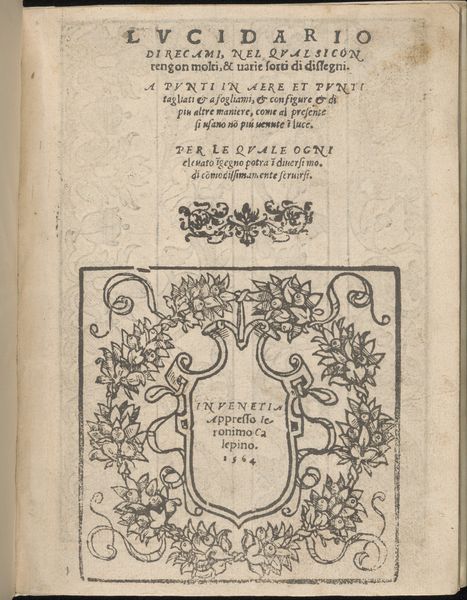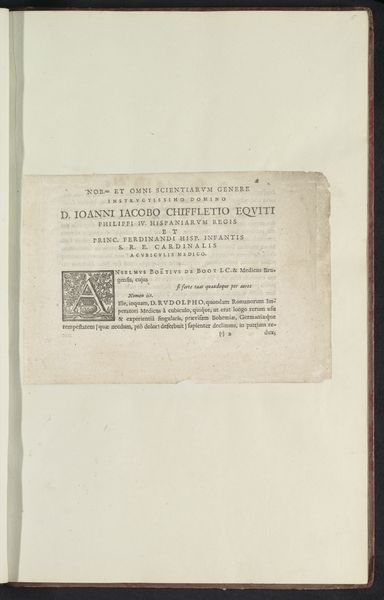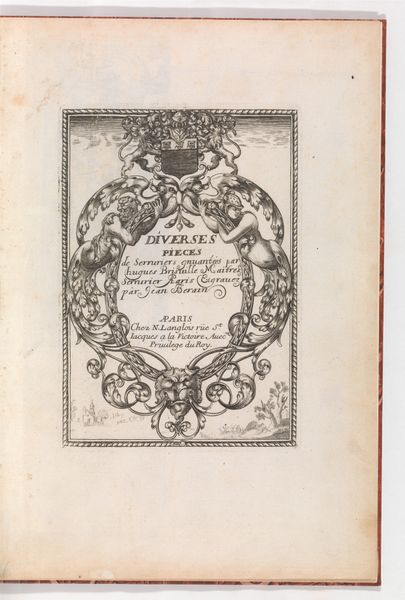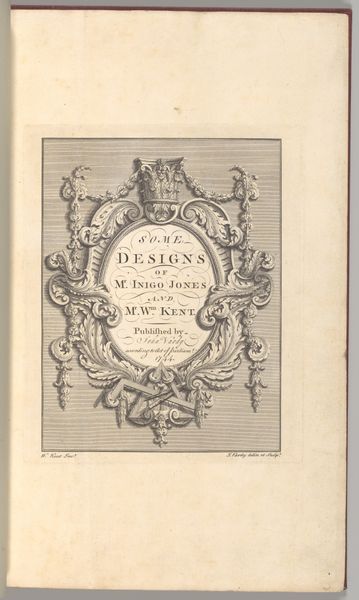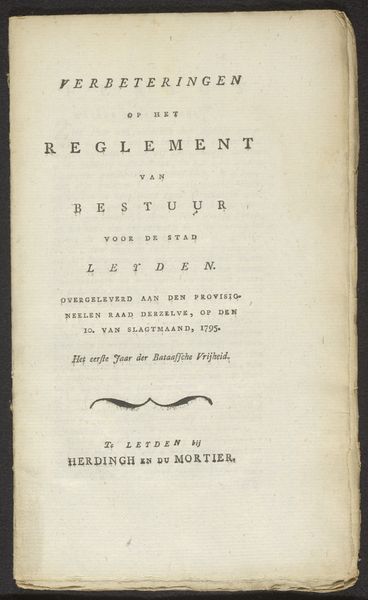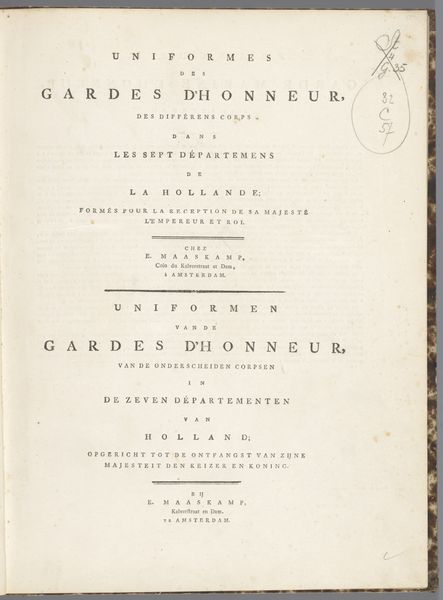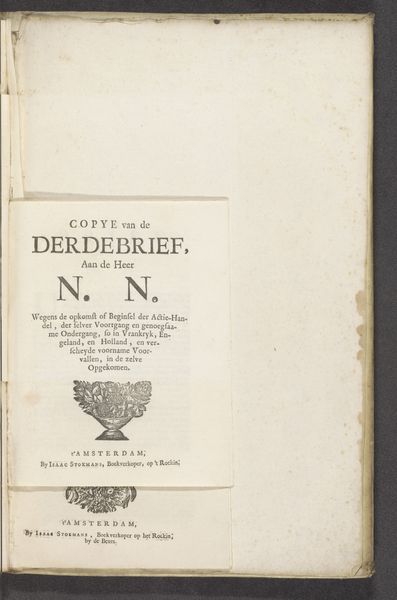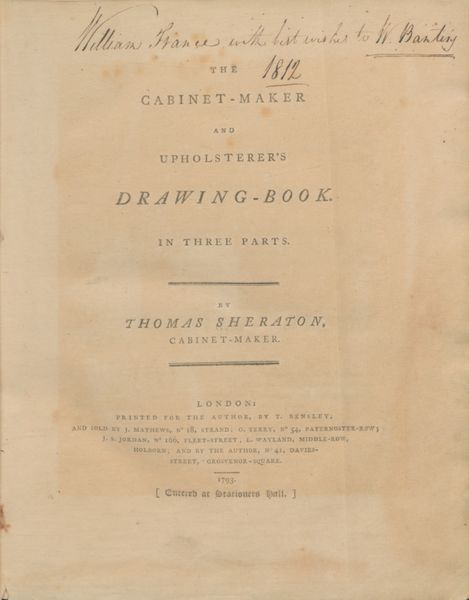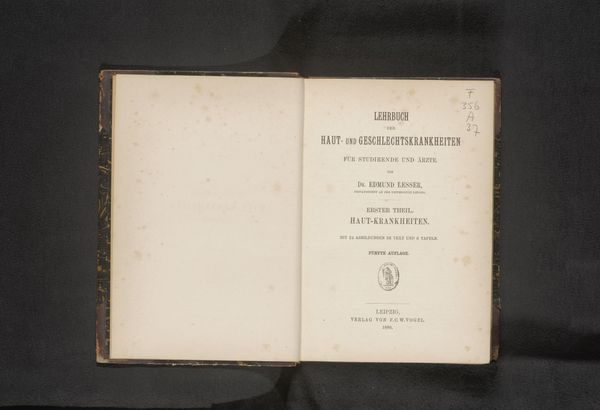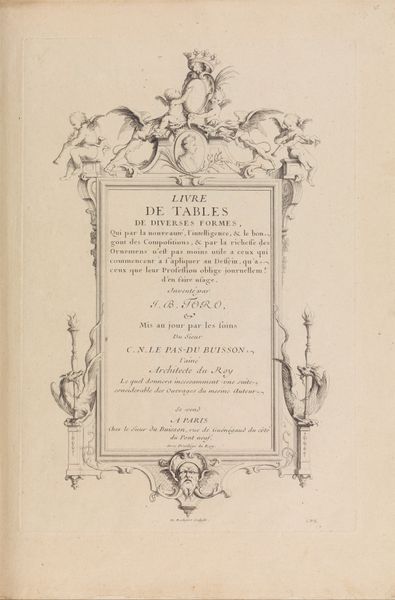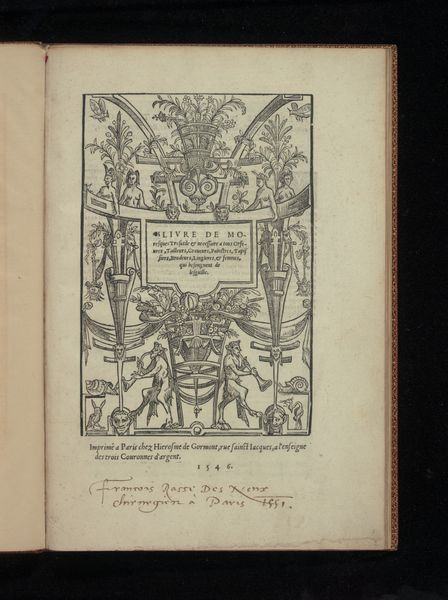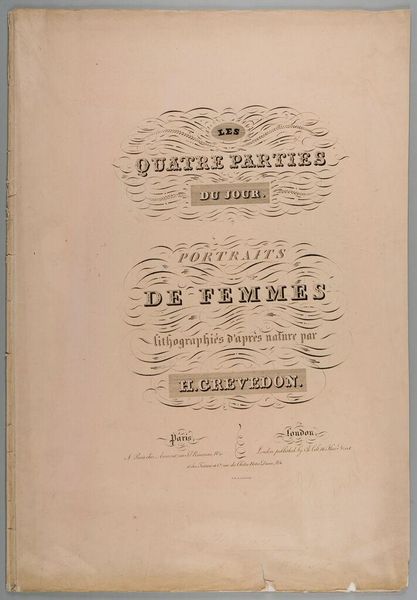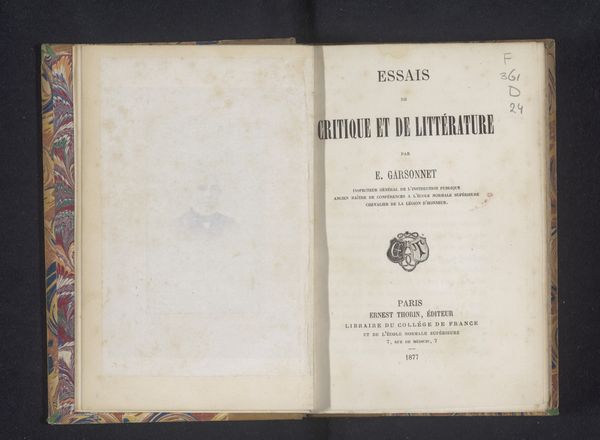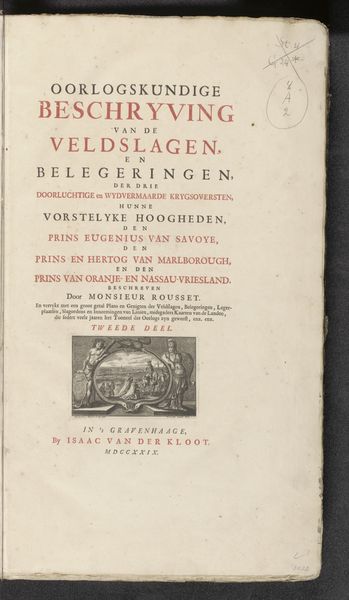
Elements d'Orfevrerie Divisés en deux Parties de Cinquante Feuilles 1748
0:00
0:00
drawing, print
#
drawing
# print
#
france
Dimensions: Overall: 11 13/16 x 8 7/8 x 1 3/16 in. (30 x 22.5 x 3 cm)
Copyright: Public Domain
Curator: Looking at this print, “Elements d’Orfevrerie Divisés en deux Parties de Cinquante Feuilles,” dating to 1748, I see not just a historical object but a key to understanding the visual language of its time. The lettering, the ornaments… it speaks volumes. Editor: My first thought goes to the practical aspects—it’s a design catalogue, really, something very functional. There is some aging, a warm cream to the paper. Was it commonly bound in this green paper? And at 12 livres the price, was this meant for every jeweler's workshop or aimed at the higher-end workshops? Curator: I agree with you, but also see it as an insight to the era's values. Pierre Germain was very deliberate, I am certain of it. This is the book's front page! The typographical choices, the flourishes, these weren't accidental. Consider the garland. In heraldry, leaves represent growth and renewal. This image signals that the artisan embraces progress and that is appealing in every era. Editor: Exactly! Artisans were increasingly concerned with expanding their markets, not just tradition, as techniques shifted due to mechanization. These manuals aided distribution of knowledge! The design, meant for dissemination, is about practicality first, maybe with a veneer of cultural importance overlaid later, since its purpose is a commercial one. The inclusion of "avec privilège du Roy" speaks to its target consumer too! Curator: It’s interesting you say veneer. Privilege, though it represents something material, always serves as an indicator of prestige. These artisans saw themselves as guardians of quality in luxury. That’s very important to consider if you were an apprentice jeweler, trying to ascend in that guild hierarchy! Editor: But the image, while full of flourishes, exists in service of promoting the designs of silverware and jewelry. The 'elements' of metalwork, how to form them and build objects. It reduces a grand thing into steps. This hints that, from the outset, its about democratization in skills through accessible visual techniques and written language, so that more could participate in craft. It makes the skills involved easily accessible. Curator: Fair points all around! So, in essence, a piece offering a glimpse into not only design but social values, artisanal identity, and the distribution of taste. Editor: And the interplay between the economic imperative and symbolic aspiration within craft, all rendered practically in print. I learned a lot just then.
Comments
No comments
Be the first to comment and join the conversation on the ultimate creative platform.
